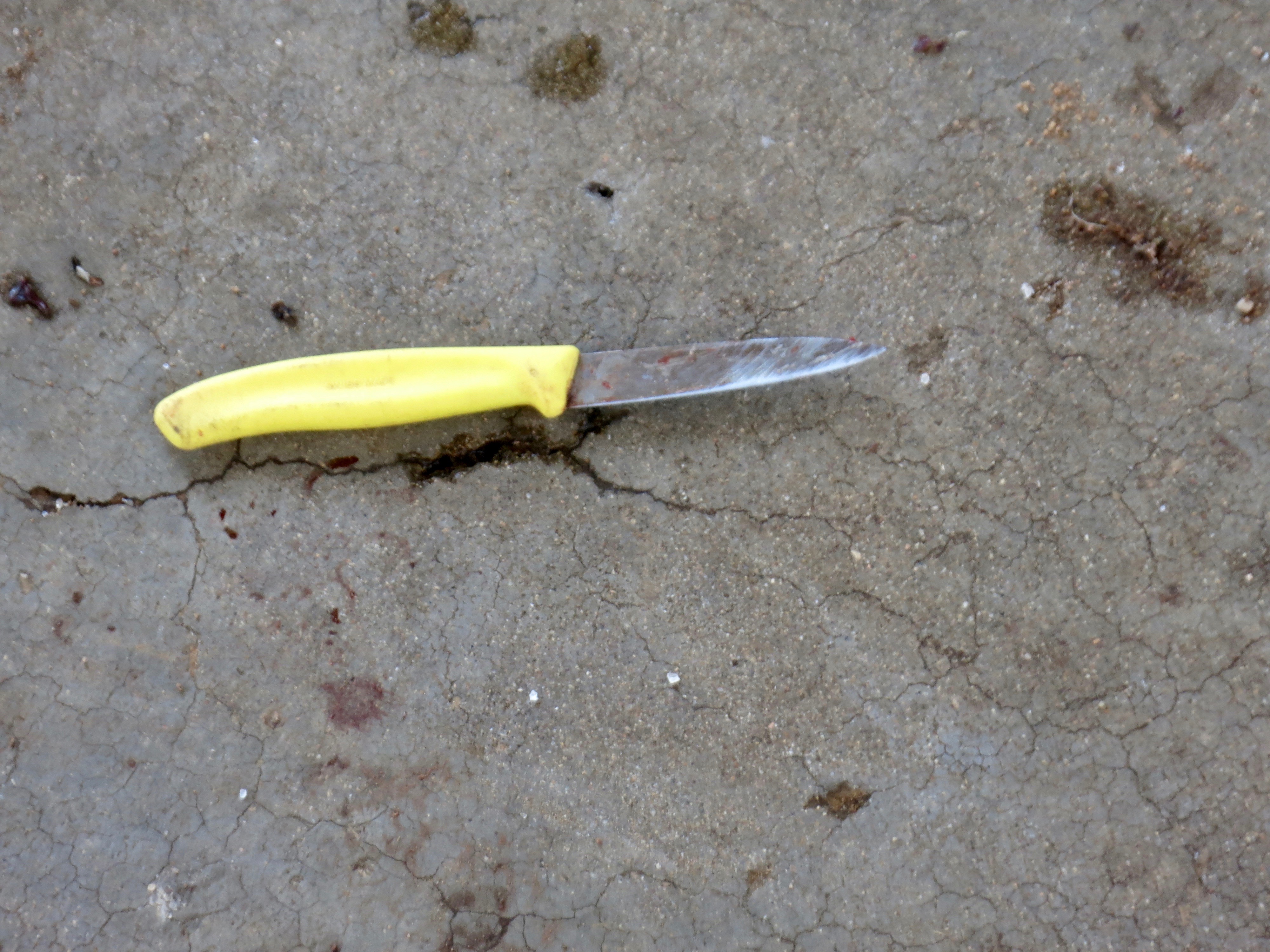so the university of sharpening knives continues.
my parameters are that I am using a lanski, and am unlikely to change for better or worse.
there is no suggestion that this is the best, but rather it is what I have .
all my knives and many other peoples have been sharpened at 20 degrees or 25 degrees, some work having gone into creating the bevel angles, mostly with the coarse diamond, then working up to the fine diamond which is 600 grit.
at this stage they feel pretty sharp.
then they are stropped using the roughout side of the leather loaded with compound.
this will remove the scratching marks of the stones. (diamonds)
sometimes the lapping seemed to blunten the edges.
the abrasives definitely leave a burr, size depending on how much work is done and how hard you press.
pressing lighter and going side to side for each stroke will minimize this burring.
following the strop a steel was used, and this brought the stropped edges up to full sharpness, even the ones which felt bluntened.
this suggested that the steel was doing something necessary, and the most logical thing was removing a burr, because the difference in sharpness was pronounced.
added to which, garry's little steel which is smooth does a far better job than commercial steels with flutes in them.
at about this time I took delivery of a 2000 grit polishing stone from lansky, and one of their little strops to try.
this was intended to do these jobs at the same angle as the metal removal.
here was exposed a weakness of lansky like products.
although going from 600 to 2000 grit seemed excessive, I was prepared to take the time.
however nothing much was happening, which turned out to be that those wire rods are virtually impossible to get the same straightness as each other in relation to the sharpening surface.
with coarser abrasive, 1/2 degree makes no difference as self correction takes place, but superfine cannot do this in a reasonable time.
the little strop was forgiving in this respect as the smooth out surface flexes somewhat, exposing a less than perfect alignment to the cutting edge.
using stropping compound produced after much work an almost transparent feather edge of great flexibility.
of course this limited sharpness.
the steel removed that feather.
putting this in perspective made me wonder some things.
I now believe that the bevel on a knife is actually the knife builders job, unless the owner decides to change it.
this bevel for a slicing blade is best kept low, say 20 degrees.
the very cutting edge then becomes the owner's responsibility.
my observance of heavily stropped knives is that the bevel actually becomes convex rather than straight, slightly increasing the edge angle to who knows what.
this might get rid of the feather produced by the abrasive stones, but will develop on of its own, particularly as you are going backward rather than slicing into the strop.
a hand strop, rather than a guided strop seems to work better at this, actually making a faster convex.
this gave me the idea that there might be another way.
taking one of my proudly sharpened 20 degree blades, I gave it a few wipes each side at 25 degrees with the 2000 grit, then a light stropping alternating sides for each side with virtually no pressure.
voila, sharpness to a new level, but garry's little steel took it to another level again.
I would like a guide that could include 20 and 22.5 for this, but can live with 20 and 25.
garry's little steel was not used as he recommended, but not in the traditional way where you take the edge toward yourself for obvious safety reasons.
I held the back of the blade to my hand and worked short sections of the blade as if slicing bits off the steel moving the steel and not the blade.
this takes time, as you have to do a bit and feel the blade and do some more.
this would not worry me on a hillside, as I might need a little spell by the time a good knife needs a hone anway.
which brings us to the term HONE.
so many products are now sold as honing devices, only to be described as diamond and suchlike.
these things do not hone, but remove metal, and that is the difference.
honing might smooth metal, but does not remove it.
garry's steel is a honer, and as should be recognized as such.
he recommends using it backward like a strop, in part to remove tissue from the blade edge.
when I get to cutting meat and skin I intend to try my method against garry's, as I have an open mind.
and thus the learning experience goes on.
luckily, while sharpening knives can be a bore, it can also be quite therapeutic.
and learning anything is never wasted.
with regard feather edges, I have read the suggestion that dragging the edge through a piece of wood might remove it.
I don't know, and if it does, might not it tear pieces of steel from the edge?
bruce.


